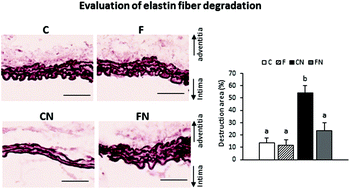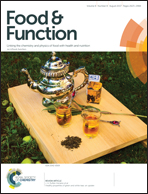Suppressive effects of dietary EPA-rich fish oil on the degradation of elastin fibers in the aortic wall in nicotine-administered mice
Abstract
Abdominal aortic aneurysm (AAA) is a vascular disease involving gradual dilation of the abdominal aorta. Recent studies suggest that nicotine, which is a primary component in cigarette smoke, is closely associated with the development and rupture of an AAA. Nicotine accelerates AAA development through the weakening of the vascular wall by increasing oxidative stress and matrix metalloproteinase (MMP)-2 expression. However, little is known about preventing the AAA induced by nicotine. A non-surgical means of preventing the weakening of the vascular wall before the onset of AAA by functional food factors would be a valuable option over surgery. Fish oil is a functional food that is rich in n-3 polyunsaturated fatty acids that have an anti-inflammatory effect. In this study, we evaluated the effect of dietary fish oil on the weakening of the aortic wall due to nicotine administration in a mouse model. Histological analysis showed that the dietary fish oil suppressed the degradation of elastin fibers in the nicotine-administered mice. Additionally, the dietary fish oil suppressed the protein level of MMP-12, macrophage infiltration, and the oxidative stress in the vascular wall. These results suggest that fish oil could suppress the weakening of the vascular wall by suppressing the elastin fiber degradation caused by nicotine. By suppressing the nicotine induced weakening of the vascular wall, fish oil might help prevent the development of AAA.



 Please wait while we load your content...
Please wait while we load your content...